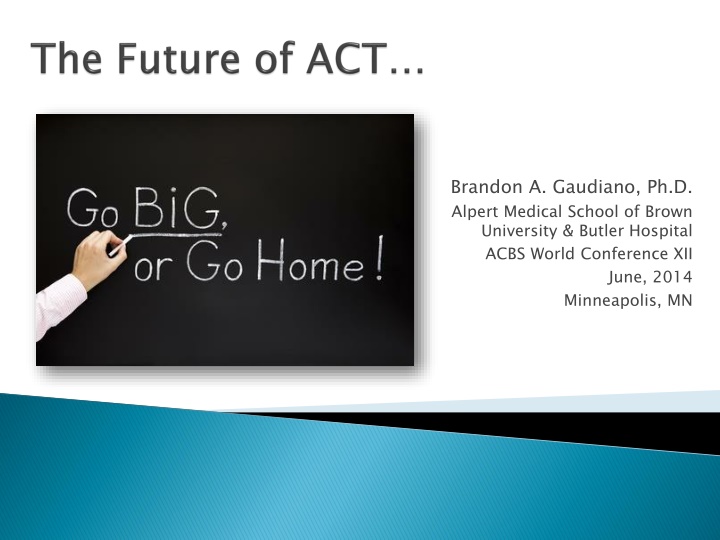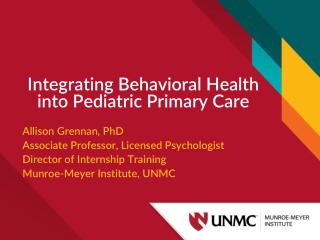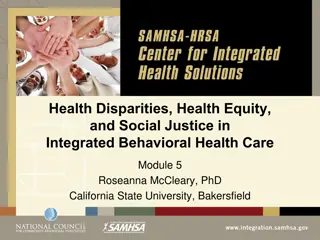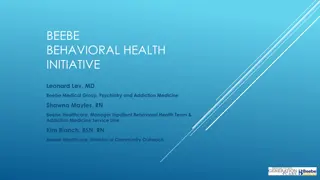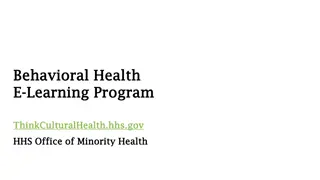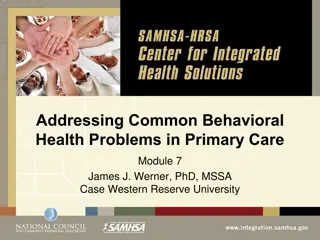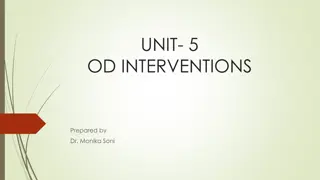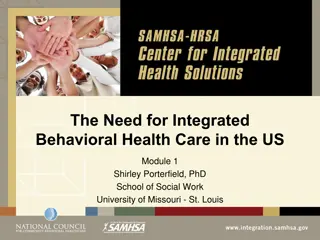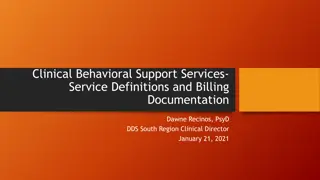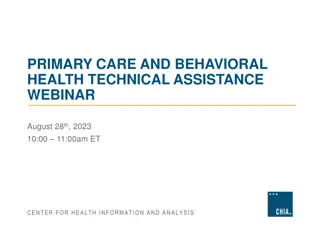Enhancing Behavioral Health Interventions
This content discusses expanding technology and clinician training, as well as the role of behavioral interventions in healthcare systems. It highlights potential problems and offers solutions, emphasizing the integration of cognitive/behavioral techniques in Acceptance and Commitment Therapy (ACT). The complexity of the ACT model and building a tiered training approach are also addressed.
Download Presentation

Please find below an Image/Link to download the presentation.
The content on the website is provided AS IS for your information and personal use only. It may not be sold, licensed, or shared on other websites without obtaining consent from the author.If you encounter any issues during the download, it is possible that the publisher has removed the file from their server.
You are allowed to download the files provided on this website for personal or commercial use, subject to the condition that they are used lawfully. All files are the property of their respective owners.
The content on the website is provided AS IS for your information and personal use only. It may not be sold, licensed, or shared on other websites without obtaining consent from the author.
E N D
Presentation Transcript
Brandon A. Gaudiano, Ph.D. Alpert Medical School of Brown University & Butler Hospital ACBS World Conference XII June, 2014 Minneapolis, MN
Expand the technology Expand the technology Expand the training of clinicians Expand the training of clinicians Expand the role of behavioral intervention in the healthcare system Expand the role of behavioral intervention in the healthcare system
C T B
Potential Problem: ACT s distinctive techniques (metaphors/ exercises) can get in the way of the work Potential Problem: Related Problem: Therapists forget to use traditional behavioral strategies that may be useful/essential Related Problem:
Possible Solutions: Possible Solutions: Better integrate standard cognitive/behavioral techniques that work well into ACT Train therapists to conceptualize/employ CBT strategies in an ACT-consistent way linked to the model
Exposure Behavioral Activation Skills Training Stimulus-Control Contingency Management Homework Cognitive Interventions (e.g., thought records)
Contact with the Present Moment Acceptance Values Psychological Flexibility Defusion Committed Action Self as Context
Potential Problem: The complete ACT model can be too complicated for novice/less advanced therapists to learn at first Potential Problem: Related Problem: Traditional CBT is easier to learn (at least initially at a superficial level) than ACT and so may achieve better uptake in community settings Related Problem:
Possible Solutions: Possible Solutions: Develop a multi-tiered training system that can build from beginner to advanced knowledge over time Meet therapists where they are at with ACT training just like we adapt our interventions to meet clients in need
Treatment Psychotherapy only Both together Treatment 1998, % 15.9 1998, % 2007, % 10.5 2007, % AOR (95% CI) 0.66 (0.48 0.90) 0.73 (0.59 0.90) 1.63 (1.32 2.00) AOR (95% CI) 40.0 32.1 Psychotropics only 44.1 57.4 National Trends in Outpatient Psychotherapy Mark Olfson, M.D., M.P.H. & Steven C. Marcus, Ph.D. Am J Psychiatry 2010;167:1456-1463.
Potential Problem: The Biomedical Model is growing stronger and stronger in mental health treatment settings Potential Problem: Related Problem: Biological reductionism is becoming the dominant way of thinking about behavioral problems and their solutions Related Problem:
Possible Solutions: Possible Solutions: Steadfastly pursue functional contextual neuroscience to take back biology Advocate strongly for the role of behavioral interventions and influence public policy
